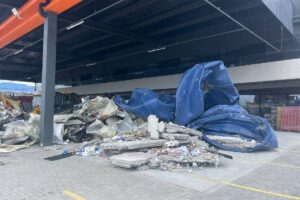Agile, Waterfall, or RAD: Which Methodology Is Best For Your App Development? Blog
Content
- Rad Model Advantages and Disadvantages
- Comparison between Agile Model and other models
- What are the Challenges of Rapid Application Development?
- Sign up to get the latest Lucidchart updates and tips delivered to your inbox once a month.
- Start Your Coding Journey Now!
- Who Should Use Agile Methodology?
- RAD or Agile We’ll Help You Supercharge Your Software Development
The feedback is not just restricted to pure functionality but also interfaces and visuals. The two steps are reiterated until an end product satisfies both the client and the developer. Rapid Development was built as an efficient, quicker, and seamless way to create an app from the design phase to deployment.

Rapid Application Development is a type of Agile software development model that came into existence in 1980s. Its invention was a direct result of the drawbacks of regressive traditional development models such as the Waterfall Software Development Model. One of the major flaw in waterfall model was that, once the software enters the testing phase it becomes very difficult to alter its core functions and features. Ultimately, you end up with a software that may or may not fit your evolving requirements.
Rad Model Advantages and Disadvantages
Adopters of RAD aimed for higher quality outcomes that met user needs, while avoiding the pitfalls of waterfall development. However, as much as the method centers on the user, this people-first approach failed to extend to the needs of development teams themselves. It relied on a certain level of expert input and the big picture was likely to become lost in fragmented cycles of prototyping. While the requirements gathering phase is common across all software development models, the time spent on the phase differs. Since RAD treats the software as a pliable object, the requirement gathering phase needs to be detailed.
In this rapid application development phase, the developer’s goal is to build something that they can demonstrate to the client. This can be a prototype that satisfies all or only a portion of requirements (as in early-stage prototyping). That means you’ll end up restarting the development from the beginning every time the client suggests changes.
Agile teams are usually small that is why team members must be professional in a variety of areas. Agile is extremely beneficial for projects where the end-goal is not clear or defined accurately. As the project progresses, the goals will come into the picture and development can easily adapt to these evolving requirements. It includes measures on how to ensure mobile app security such as incorporating SSL traffic encryption, password protection, and secure storage of user credentials. At this point, all the functions, aesthetics, interfaces, and features of the software are finalized with the end-user.
Comparison between Agile Model and other models
Hence organizations who do not have well established Agile models usually prefer RAD as their ideal development model. The Waterfall method of development has roots in conventional engineering. But, in the case of application development, you’ll likely have seen how it can – often, does – lead to projects running over time and budget.
Each segment is constructed methodically, and the customer needs to approve each component before starting a new development process for the next one. In each Sprint, a mini-project goes through a Systems Development Life Cycle or an SDLC. The RAD development team is small, and the members are seasoned and experienced developers. If a project needs rapid change, with RAD, the process will go very quickly. You can hire them for one stage of the development process without handing them the entire project.
How Rapid Application Development Helps Teams Save Time – G2
How Rapid Application Development Helps Teams Save Time.
Posted: Mon, 24 May 2021 07:00:00 GMT [source]
The RAD methodology involves smaller teams of highly experienced developers and programmers who are well-versed in various disciplines. If changes are required, they are discussed and incorporated throughout the development process. RAD is all about reducing the development time and refining through prototypes.
What are the Challenges of Rapid Application Development?
Despite its challenges, RAD remains a popular choice for many organizations due to its ability to deliver high-quality software quickly. If you are considering using RAD for your next project, be sure to weigh its advantages and disadvantages carefully to decide if it is the right fit for your needs. In either case, there is a significant emphasis on early and continuous software delivery and room for changing requirements even in the later stages of development. Still, the emphasis on adaptive and incremental methods as applied to software development broke ground on popularizing this way of thinking. If your project meets all these criteria, you should consider choosing the RAD model for software development. Suppose the client can commit to allocating the time needed to look over the prototype from time to time and provide feedback.
Unlike the Waterfall approach, RAD focuses on processes rather than design. RAD uses existing code, redirected models, and proven processes to create new software prototypes. The altering of the software after the development can be lengthy, and in some cases impossible to complete after the product reaches a certain point in development.
Sign up to get the latest Lucidchart updates and tips delivered to your inbox once a month.
In search of agility and quality in software development, there are methodologies that are capable of enhancing the performance of the professionals involved in its processes. It is important to know that the RAD model is only valid when there are plenty of knowledgeable developers and engineers on hand prepared to work on the progress of the product. The customer must also remain committed to the process and the schedule in place for the completion of the model. When either of these two components is not available, the RAD formula can fail. The actual system is built and coding is done by using automation tools to convert process and data models into actual prototypes. The business model for the product under development is designed in terms of flow of information and the distribution of information between various business channels.

Designers and developers work alongside their clients to generate a minimum viable product that can be adapted and improved over multiple iterations. Below, we discuss the Rapid Application Development vs. Agile methodologies debate, their advantages and disadvantages, and how the RAD and Agile models compare overall. When changes to the product are planned throughout the development process. The RAD model is much more effective because it gives the customer a working model much sooner.
In the cutover stage, you need to work out data conversion and the change from the existing system to the new system, test the product, and train its users. It is an iterative process that requires heavy involvement from the client’s side. The repeated prototyping and testing will smooth out any bugs in the systems and gaps in understanding the requirements. Every project, irrespective of the framework, has to start with the gathering of requirements.
Start Your Coding Journey Now!
You ensure your team is both able and ready to collaborate and work extensively with the customer to make sure your prototypes are built and tested efficiently. It works best when your business budget, requirements, and objectives benefit from an iterative and constantly changing process. As for clients, they must commit to providing frequent feedback during the iterative, on-going rapid application development process.
RAD model is suitable for small and medium-sized projects, not for all projects. Rigid nature makes it easy to use and allows for in-depth documentation. Agile focuses on the importance of frequent communication and face-to-face interactions. Teams work together and people are able to take responsibility and own individual responsibility for the projects.
- The differences between RAD Model and Agile are still emerging, as they aren’t usually seen as conflicting.
- First released in 1994, DSDM is based upon therapid application development method.
- Advantage Description Speed In the traditional waterfall approach, developers were unlikely to go on vacation after delivering the product.
- The product is worked upon by developers, programmers, coders and testers until the final product meets the client’s expectations and objectives.
- WithRAD, you can take an on-the-fly approach, which can change direction of the development efforts, on a dime.
- In this article, we’ll highlight the difference between the two most popular software development methodologies Rapid Application Development and Agile.
In the world of project management, “agile” is the method du jour. When compared to other development approaches, the cost of adopting an agile process is somewhat higher. After the development phase is completed, the testing phase begins.
RAD emphasizes rapid prototyping, whereas Agile develops features incrementally. The client provides feedback and inputs in this phase, too, if needed. In this stage, you construct and verify the system, test it, and prepare for the final transition. After the second phase, you have parts of the product but not a complete product.
Who Should Use Agile Methodology?
At the beginning of the project, both the development team and the stakeholder team gather to build a project plan based on the project requirements. At the end of a sprint cycle, team members submit their finished components in working order. These components are now moved to the “To Verify” phase and submitted to the client for feedback. If approved, the task gets moved to the “Done” pile; if not, it restarts the build-test-feedback karmic loop. In the RAD model, steps 2, 3, and 4 represent what’s known as the Prototype Cycle. The Rapid Application Development model is an agile development method designed for fast response and high-quality results.
Do you find your users’ needs have changed by the time your organization’s completed the development project? Application lifecycle management can make your development process more flexible and reveal opportunities to expand functionality after deployment. Find out how we can help you streamline https://globalcloudteam.com/ application development and maximize ROI. With RAD model of outsource app development, the client can see the demo of the final product much faster. During the creation of a prototype for any product, to save time and money, it is essential to create one that can be reused for fast changes.
Lower Costs
Ensuring maintainability, usability, and stability are of key importance before delivering the final product. This practice is not imbued in all teams, but all teams can learn it and several tools can help. If your team cannot iterate quickly or you cannot afford the tools which enable them to do so, RAD development may not be a suitable choice for your work. Continue incorporating client feedback while the code is tested and retested to ensure a smooth, functioning final product. All final changes are made while the coders and clients continue to look for bugs in the system. This third phase is important because the client still gets to give input throughout the process.
The clients present what they expect the software to do and the features that should be there. RAD enables developers to work on various independent prototypes parallelly. These are all integrated in the end to create a complete software product. Rapid Application Development was introduced definition of rapid application development in the 1970s as a sort of counter to the Waterfall methodology. The primary goal of RAD is to produce working prototypes of the products as fast as possible and to continuously tweak and improve. The project has to complete two to four phases before the coding actually begins.




